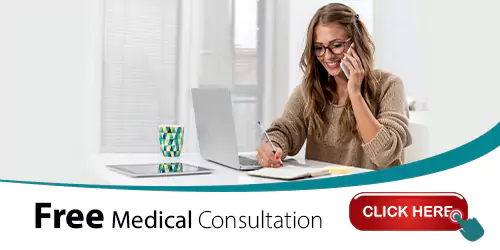
IVF + Gender Selection in Iran
Nowadays, treating infertility problems and having a child has become easier due to assisted reproductive technologies. Couples can even choose their offspring’s gender through IVF + gender selection. This is not a dream but it is a reality of modern assisted reproduction.
Reproductive technologies have advanced significantly so that by doing a lab test, the sex of the embryo will be revealed. Through preimplantation genetic screening (PGS) tests, patients are allowed to decide if they want to have a baby boy or a baby girl. In this article, we will cover the whole process of IVF and gender selection (sex selection) to know how they work and how successful this process would be.
How does IVF plus PGD Work in Iran?
In vitro fertilization (IVF) with PGD in Iran is a series of procedures that can help individuals conceive a child. It can be used to address infertility issues, prevent genetic disorders in the offspring, and in some cases, allow for gender selection (although the ethics of this vary by country).
First, ovulation stimulation and egg retrieval take place. Medications stimulate the ovaries to produce multiple mature eggs, which are carefully retrieved using a thin needle guided by ultrasound.
Next is sperm collection and fertilization. A sperm sample is collected from the male partner and combined with the eggs in the lab to achieve fertilization. Sometimes, ICSI (intracytoplasmic sperm injection) assists fertilization.
Following this, embryo culture and selection occur. The fertilized eggs (embryos) are monitored for development in a controlled lab environment. After a few days, high-quality embryos are selected for implantation.
During the embryo transfer stage with gender selection, one or more healthy embryos are carefully transferred into the woman's uterus using a thin catheter, aiming for successful implantation and pregnancy.
Finally, pregnancy monitoring is conducted. If implantation occurs, the woman undergoes monitoring to track fetal development.
To get a thorough understanding of what is ivf with pgd click on this link and read the article.
What are the Reasons for Gender Selection during IVF?
Gender selection was initially developed to help couples with a history of a sex-linked genetic disease, aiming to reduce the risk of having a child with the same disorder. As sex selection technology has evolved, more couples were willing to use it for non-medical reasons. There are many reasons for using this technology during IVF. The main reasons for using sex selection are discussed below.
- Intended parents usually choose the sex selection method for “Family balancing”. For example, a couple always wanted to have a girl but they only have boys. Therefore, they can use a sex selection process during IVF to make sure they can get a baby girl.
- Another reason for doing this process is the risk of transmitting a genetic disease to the baby. Some couples have another child affected by a genetic disorder; therefore, they use sex selection to avoid the type of disorder that affects a specific gender (sex-linked disorders).
- A couple may have lost a child and wish to have another one of the same sex.
- Some people may feel psychologically more prepared to parent one specific gender.
- In some traditional cultures, having a baby with a certain gender (often a male) can be considered a merit.
There are so many deeply personal reasons for wanting to undergo sex selection that should all be respected. If you want to undergo gender selection, we can discuss it during the consultation session and put it into your treatment process. Sex selection is an incredible service that let parents be more prepared for raising their future offspring.
How to Select Baby’s Gender?
There are some myths and theories for choosing the sex of a baby through certain diet or other factors, though they do not have scientific documents and should not be taken seriously. However, through a scientific method used along with the IVF process, the sex of the baby could be chosen with very high accuracy. Gender selection is not a separate and stand-alone service and it should be used in conjunction with in vitro fertilization.
A baby’s gender can be revealed in the early stages via in vitro fertilization and preimplantation genetic testing (PGT) when it is only the first days of insemination. Two chromosomes known as X and Y determine the sex of the baby. Egg cells of female partner always carry XX chromosome while male sperm carries XX or XY chromosomes. If a sperm containing XY chromosome fertilizes the egg, the embryo will be a boy and if a sperm containing XX chromosome fertilizes the egg, the resulting embryo will be a girl.
You may already know that there is a 50/50 percent chance of having a baby with either gender. Therefore, in order to determine the sex of your baby confidently, you must use IVF + sex selection service. For example, if you want to have a baby boy, your doctor needs to accurately select a sperm that contains the XY chromosomes to fertilize your eggs. In case you want to use a donor embryo, you need to have an embryo containing XY chromosomes.
Is Gender Selection Safe?
Gender selection happens through PGD or PGS testing. In these techniques, no increase in birth defects compared to general pregnancies has been seen. Removal of a few cells of the embryos for the screening process or revealing their sex does not harm the embryo or stop it from developing. By follow-up evaluations of children who were born after the PGS or PGD process, no noticeable negative effects on the growth of the babies have been detected.
The PGD/PGS/PGT-A Process for Gender Selection
Those who are willing to use the gender selection technique should undergo the same protocols as others utilizing in vitro fertilization. Through the IVF process, when the egg and sperm are inseminated and the embryo has been formed, the fertility doctor can examine the embryos and identify their genders (sometimes fertilization is accomplished with intracytoplasmic sperm injection or ICSI, in which sperm is injected directly into the eggs). The sex selection process happens through preimplantation genetic diagnosis (PGD), or preimplantation genetic screening (PGS/PGT-A).
By conducting PGD/PGS/PGT-A testing on embryos, an embryologist can determine if any chromosomal abnormalities can lead to future birth disorders. In addition, the sex of the embryos will be revealed by showing XX and XY chromosomes, letting the parents choose the desired sex for their baby.
Sex selection begins in a laboratory setting. When the embryo has been formed, a single cell named blastomere is removed from the outside layer without harming it by using a microscopic glass needle and laser. Then the cell’s genetic makeup will be analyzed under the microscope to determine the gender and its general quality. Finally, the high-quality embryos of the preferred sex would be transferred into the recipient’s uterus.
What Happens to the Unused Embryos?
If there are embryos that do not have your preferred gender, you can consider different options about what you can do with them. The embryos of high quality can be frozen and kept for future use. In one of the cases, a baby has been born from a frozen embryo that has been kept for 27 years. They can be donated to an infertile couple or an individual who wants to have children. They can also be donated to medical research institutions for further studies on embryo development and other related research.
What are the Success Rates of Gender Selection with IVF in Iran
In Iran, IVF clinics offer gender selection through pre-implantation genetic Testing (PGT) techniques like PGS/PGD/PGT-A. While PGT is highly accurate in identifying an embryo's sex chromosomes (XX or XY), it's important to consider these factors:
• Theoretical vs. Achievable Success Rates: The PGT test itself has a high success rate in identifying chromosomal sex. However, achieving a successful pregnancy through IVF with gender selection involves additional factors.
• Embryo Quality: Not all retrieved eggs will fertilize, and not all embryos will develop healthily. Age, underlying health conditions, and egg/sperm quality can affect embryo viability.
• Number of Available Embryos: A sufficient number of healthy embryos are needed for selection based on sex chromosomes. If there aren't enough suitable embryos of the desired sex, gender selection might not be possible.
• Implantation Success: Even with a chromosomally health embryo transferred, a successful pregnancy is not guaranteed. Factors like the mother's age and uterine health can impact implantation rates.
Gender Selection Cost in Iran
Gender selection costs vary in different countries. In the US, the average cost of sex selection is around $27000. Undergoing the sex selection process in Iran is an ultra-affordable option that helps people from different economical levels get their treatment in lower costs. The cost of IVF and sex selection in Iran is around $3800, which is an amazing offer to international couples who want to select the gender of their offspring.
The important reason that couples choose Iran as their medical destination is not only the significantly low cost of PGD treatment but also the high quality of the process with almost 100% exact results. While the cost of sex selection in Iran is about one-fourth of IVF and PGD cost compared to the other parts of the world, the quality of the service is compatible with countries like USA and Germany.
What are Ethical Considerations about Gender Selection in Iran
Gender selection for non-medical reasons is a complex issue with ethical considerations. It's important to be aware of these considerations before deciding to pursue this option. Here are some points to ponder:
• Potential for sex discrimination: Gender selection could unintentionally contribute to a societal preference for one gender over another.
• Focus on child's characteristics over well-being: The emphasis may shift from having a healthy child to having a child of a specific sex.

Conclusion
Due to the high cost of gender selection and the limitations of practising this technology in some countries, many people travel to Iran to receive affordable sex selection services of the highest quality. FlytoTreat is honored to help couples in this way by standing beside them as early as the consultation step and providing the medical visa, until the pregnancy and the need for follow-up attempts. For getting more information about this service, feel free to contact us all throughout the week.
MEDICALLY REVIEWED BY: Dr. Ali Bazazi
AUTHOR: Leila Nazari
17 June 2023 - Updated At: 03 November 2024
Related Articles
Comment





